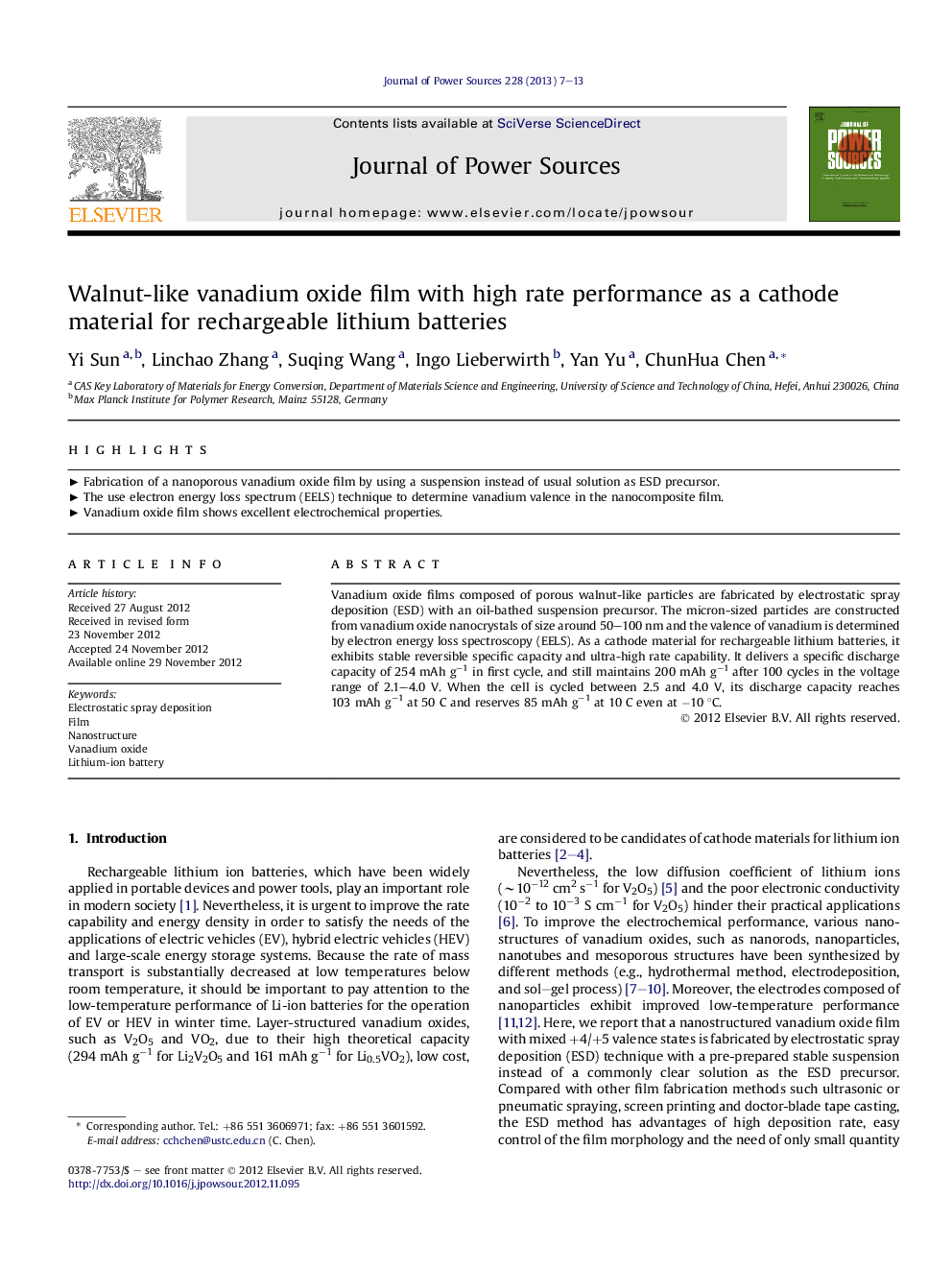| Article ID | Journal | Published Year | Pages | File Type |
|---|---|---|---|---|
| 1288199 | Journal of Power Sources | 2013 | 7 Pages |
Vanadium oxide films composed of porous walnut-like particles are fabricated by electrostatic spray deposition (ESD) with an oil-bathed suspension precursor. The micron-sized particles are constructed from vanadium oxide nanocrystals of size around 50–100 nm and the valence of vanadium is determined by electron energy loss spectroscopy (EELS). As a cathode material for rechargeable lithium batteries, it exhibits stable reversible specific capacity and ultra-high rate capability. It delivers a specific discharge capacity of 254 mAh g−1 in first cycle, and still maintains 200 mAh g−1 after 100 cycles in the voltage range of 2.1–4.0 V. When the cell is cycled between 2.5 and 4.0 V, its discharge capacity reaches 103 mAh g−1 at 50 C and reserves 85 mAh g−1 at 10 C even at −10 °C.
► Fabrication of a nanoporous vanadium oxide film by using a suspension instead of usual solution as ESD precursor. ► The use electron energy loss spectrum (EELS) technique to determine vanadium valence in the nanocomposite film. ► Vanadium oxide film shows excellent electrochemical properties.
